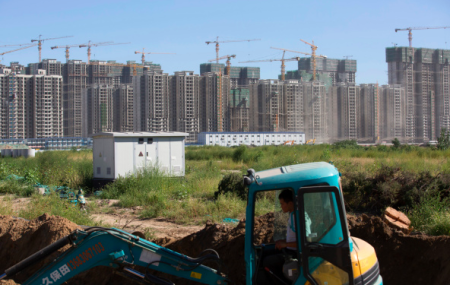China watchers are trying to make sense of the country’s stock market crisis amid growing concerns about protectionism and darkening US-China relations. Are President Xi Jinping’s reforms still on track? “I’m convinced that their resolve and commitment to their reforms is as strong as ever,” World Bank President Jim Yong Kim told reporters in Beijing this week. Here are three smart takes on what’s going on:
 On opening the market:
On opening the market:
In a speech on July 12 before a group of Chinese entrepreneurs in Shanghai, former Under Secretary of State Robert Zoellick praised the progress China has made in opening its markets and urged Beijing to embrace international institutions and systems. He also struck a note of caution: Pointing to signs of protectionism coming out of Beijing, Zoellick warned that there could be a real dollars-and-cents cost, affecting China’s economic growth and development. “This path of protectionism would cut China off from new ideas, external research, and opportunities to adapt foreign technologies,” he said.
Quoting Adam Smith and Joseph Schumpeter, Zoellick called for the Chinese government to open up the services sector to private investment. “The more sectors that China opens to private sector competition, the greater the likelihood China will unleash its innovative potential. Competition requires ease of entry—and necessitates processes for exit. Competition involves risk—and acceptance of failure.”
The high-tech industry in particular requires extensive exchange of ideas and know-how and frequent exchanges of research personnel, he said. “Open exchange requires mutual trust—including through efficient patenting and enforcement—especially in cutting edge sectors such as biotech, nanotech, software, and multimedia,” he added.

 On escaping the middle income trap:
On escaping the middle income trap:
In an interview with Vox, Paulson Institute Fellow Damien Ma explains the daunting challenges that China faces in getting beyond the middle-income trap. “There are a lot of distortions in how (China) allocates capital right now,” he says. “For example, financing incentives tend to be geared toward property (and things) like roads and bridges…, because that’s been the traditional model.”
“China’s actually the victim of its own success,” Ma adds. “It’s grown its economy really quickly, but in doing so geared its entire financial system toward this investment-driven model.”
China’s challenge is nothing short of transforming the fundamental economic model, Ma says: “When you look at the typical breakdown of GDP, your standard equation is investment, consumption, net exports, and government spending. In the China case, investment is extraordinarily high relative to the other parts of its GDP. Domestic consumption should be much higher that what it has been in China for the past 10 or 15 years, which is under 40 percent, probably in the low to mid-30s. In the US, it’s about 70 percent.”
![]()
On the stock market and compromise:
Does China’s recent stock market craze, the crash and the ensuing government intervention suggest that reforms are finished for now? That’s hard to answer, but “the episode highlights the contradictions in China’s present economic policies,” Arthur Kroeber, founder of Gavekal Dragonomics, writes in Chinafile.
Kroeber suggests that the stock market performance—its breakneck rise followed by the intervention—reflects two opposing currents in China. “There can be no doubt that influential financial reformers want bigger and more robust capital markets—including a vibrant stock market—in order to reduce the economy’s reliance on politically-driven bank lending,” Kroeber writes.
“But the financial reformers are not the only game in town… The Third Plenum Decision is no Thatcherite free-market manifesto. In addition to assigning a “decisive role” to market forces, it reaffirms the “dominant role” of the state sector. Like all big policy pronouncements during China’s four decades of economic reform, it is less a grand vision than an ungainly compromise between competing interests.”
China’s financial technocrats want a bigger role for markets to ensure efficient and sustainable growth, he says, while politicians and planners insist on a large state role in the economy.


